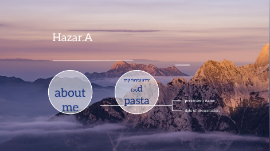text presentation
Transcript: necessary to draw up integrating and interpretative proposals based on written sources and archaeological interventions -more excavations need to be carried out to better understand ‘dark ages’ Significance and contribution to the field: -collaboration of several archaeologists -presents an integrative summary of Early Medieval fortified sites in the Iberian Peninsula approach : -presents a number of case studies -analysed in systemic and integral terms from a social perspective Argument and use of evidence: -draws on the work of numerous academics and archaeological interventions Peña Amaya Critical Analysis Asturias Network of villages created from 8th c 2 types of fortifications : 1. Defensive systems in Cantabrian Mountains e.g. El Homón de Faro and El Muro 2. Castle that would form basic scheme for territorial planning in Astur Kingom. e.g. Curiel (Peñaferruz, Gijón) and castle of Gauzón Castilian Sector (Upper Ebro Valley) Few castles excavated Many first generations reused e.g Tedeja (Trespaderne Burgos) -Excavation focused on walled enclosure -Restored ‘first generation castle’ Mayor, García e Pacheco, 'A propósito de las fortificaciones lineales ástures de El Homón de Faro y el Muro', 'El Homón de Faro outer face of wall' pg 62 'Peña Amaya'. http://bucierovidasalvaje.blogspot.pt. 12 July 2011. 06 Jan. 2013 Miguel Ángel García Guiea, Excavaciones en Monte Cildá 'Terra Sigillata from Monte Cildá. Sec V-VI'. 1973 pg 146 Evidence of seigneurial occupation and active forms of extraction of peasant surplus at castle of Treviño shows evidence of process of incastellamento -author’s opinion: Settlements fortress played a role in shaping of feudal landscape and we do see examples of incastellamento Some were ‘symbol’ castles but other ‘settlements fortress’ castles played role in social remodeling of territory Mayor, García e Pacheco, 'A propósito de las fortificaciones lineales ástures de El Homón de Faro y el Muro', 'El Muro, moat and defensive structures.'image. 2007 pg 64 Third Generation Castles Castro de Peña Amaya'. http://bucierovidasalvaje.blogspot.pt. 12 July 2011. 06 Jan 2013 First generation castles: 450-750 Second generation castles: 8th and 9th centuries Third generation castles: 10th century -Carried out within framework of HUM2006-02556/HIST research project entitled 'The genesis of the medieval landscape in northern Peninsular: Archaeology of the villages of the V to XII' -Funded by the Ministry of Education and Science Case studies History: 10th century Treviño Aim history: 450-740 corresponds to collapse of empire and formation of Germanic states on Hispanic soil Text Summary Kierstin Hamilton Changes in approach to study and understanding of sites Fortified sites being considered in relation to nearby settlements Theoretical and methodological renewal in study of early medieval societies in Duero valley and Cantabrian sites Background Globusvisió 'Castellum de Sant Julià de Ramis' photo. Sílvia Marin Ortega 06 Jan 2013 Castles explained from parameters referring to geostrategy, political and military history Considered separately from other forms of occupation -Why? Castles very visible but peasant communities and social groups are invisible -Problem? We understand where power is but not the nature of the power Written by J. Castillo as part of medieval and post Medieval Archaeology Research Group 'Aerial view Puig Rom'. www.rosespedia.ca. 13 July 2009. 06 Jan 2013. Treviño Oharrak 'Untzueta. View' photo. www.scribd.com.Jan. 2012. 06 Jan. 2013 Three periods for analyzing castles and fortified sites New studies have opened new debates at a European level -e.g. Incastellamento phenomenon -proven ineffective in Iberian Peninsula but contributed to deeper more complex analysis of fortified sites in the area Archaeology of first generation castles 'Aerial view of the lora de Peña Amaya'. http://bucierovidasalvaje.blogspot.pt. 12 July 2011. 6 Jan 2013. Second Generation Castles 3 categories in relation to size and planning: 20+ ha e.g. Peña Amaya 2-10 ha e.g. Tedeja and Bernardos 1 ha e.g. Castle of Poza de la Sal or Yecla de Silos sites: Peña Amaya, Monte Cildá, Cristo de San Esteban Mayor, García e Pacheco, 'A propósito de las fortificaciones lineales ástures de El Homón de Faro y el Muro', El Homón de Faro, Tower' pg 63 Sílvia Marin Ortega. 'Altimiris'. Photo. gencat.cat. 17 Sept. 2012. 6 Jan. 2013 Presentation: Aim, background, recent work 2 major approaches for analyzing castles and fortresses from a social perspective author will analyze landscape in integral and social terms First generation castles Altimiris Oharrak 'Untzueta. View' photo. www.scribd.com.Jan. 2012. 06 Jan. 2013 New Studies and Subject Matter Recent work J. Castillo Informe de la Primera Campaña de excavación del castilo de Treviño'. 'Silos in Treviño'. pg 28 July 2007 Tedeja Writing style and text structure: -clear organisation of ideas and layout of the text -very academic, assumes previous knowledge of subject

















